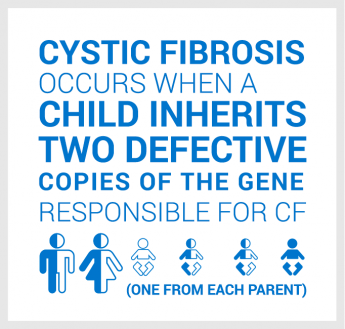Dr. Igor Stagljar, professor and researcher at the University of Toronto, has recently been funded by Cystic Fibrosis Canada for his study, Large-scale exploration and functional validation of the dynamic interactions of CFTR WT and mutant proteins with solute carrier proteins. Dr. Stagljar’s study will look at a group of proteins, called SLCs, and determine their interactions with the protein defective in cystic fibrosis, CFTR. Through this work, he proposes to generate a ‘roadmap’ to interpret these protein interactions to aid in future CF research.
Read our interview with Dr. Stagljar below!
What inspired you to pursue this research project?
About 20 years ago, during my time as an assistant professor in Zurich, Switzerland, my team and I developed a technology in yeast that could identify partners of proteins that interacted with proteins embedded in cell membranes. Over the course of 10 years, we adapted and refined this technology to be used with human cells and proteins.
Now, armed with this advanced technology, we can identify proteins connected to any human protein in the cellular membrane, one being CFTR, also known as the cystic fibrosis protein. CF and genetic diseases have always captivated my interest, and CFTR was one of the first proteins we examined using this groundbreaking approach. With our current technological capabilities, we now have the potential to investigate any mutated form of CFTR.
Can you provide a brief overview of your study?
SLCs, a group of proteins in the cellular membrane, consists of nearly 500 members within human cells. For a considerable period of time, these proteins were largely overlooked within the research community. However, in the past decade, various companies, research labs, and academic institutions have started publishing compelling papers that highlight the significant role of these proteins in maintaining overall health and their involvement in various diseases.
In a paper published last year, we identified many SLCs that are associated with CFTR. Since we just tested those proteins by screening the libraries of all human proteins, we are now focusing on all 500 human SLCs to understand their interactions with CFTR and its mutants. By determining how many of these SLCs interact with CFTR, we will also be able to identify potential new drug targets.
Why is this an important area of study?
In an influential paper published around 7-8 years ago, Lisa Strug’s lab at SickKids (Dr. Strug is also funded by Cystic Fibrosis Canada) made a fascinating discovery. They found that individuals with the same CFTR mutations, such as the common delta F508 mutation, exhibited different levels of symptom severity. It was intriguing to observe how some people with the same delta F508 mutation experienced severe symptoms, while others had more mild symptoms. Lisa's lab discovered that the top three modifier genes responsible for differences in symptoms among individuals carrying the delta F508 mutation encoded the SLC genes.
This discovery prompted Lisa Strug’s lab to focus on the role of SLCs to explain these differences. Understanding the medical significance of their findings, it became clear that pursuing this research was crucial. This is why we think that a road map that shows all the complex interactions between SLCs and CFTR will be very beneficial for the CF community.
What do you see changing over the next 5 to 10 years for those living with cystic fibrosis?
I remember when I was a student, I just started to study molecular biology when the CFTR gene was cloned, which was done in Toronto at SickKids (supported by Cystic Fibrosis Canada). Now, 33 years later, successful patient treatments showcase the power of research and molecular biology that has helped us get to this point.
The development of Trikafta is a huge achievement. But I think what we need is a more inclusive and effective version to address the varying patient responses. Some have very strong side effects while others experience very few. So, by developing improved therapies for delta F508 and other mutations for which there are still no therapeutic drugs available, I think that this will be the ultimate way to treat CF globally in an unprecedented way.
I also think it is important to stress that we will be able to develop these improved therapies only if we understand, more deeply, how CFTR protein functions, how it’s associated with other proteins, and how these proteins that are associated with CFTR contribute to the disease. And I think this is where our grant and our technology have the power to address this important question and have the potential to identify novel therapeutics.
How do you think your work will impact those living with cystic fibrosis?
Based on our previously published discoveries, I am confident that some of the SLCs that we will be identifying will one day be validated as a novel drug target and that we might develop programs to modify the function of these proteins linked to CFTR. I think that these therapies, in combination with Trikafta, hold potential for more effective treatments for cystic fibrosis.
I can guarantee that in addition to having our novel technologies, we are working with some of the best Canadian researchers in the field of cystic fibrosis, and I think that this collaborative approach will soon result in the discovery of new drug targets.





